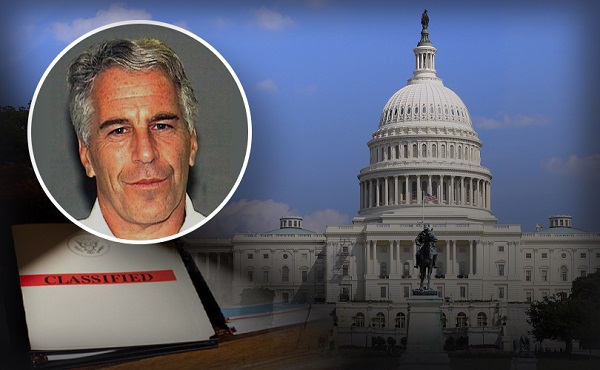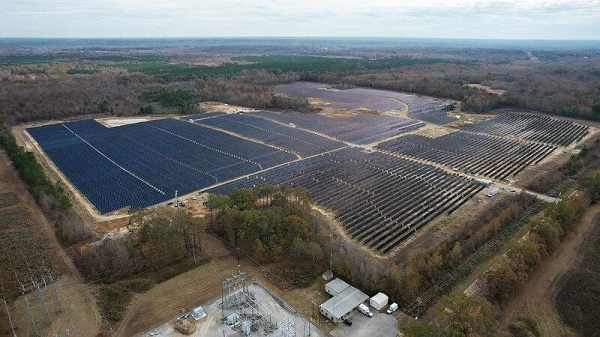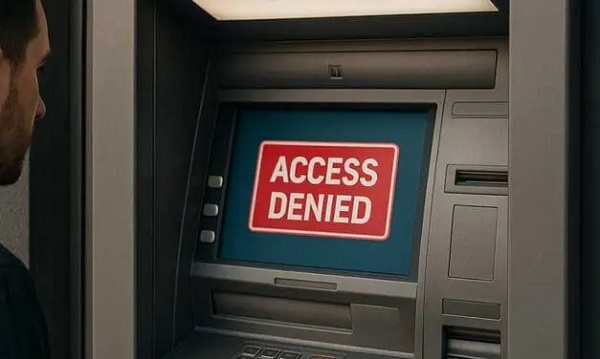National
2 in 3 Canadians want proof of residential school ‘mass graves’ before believing claims

From LifeSiteNews
56% of Indigenous respondents, demand concrete evidence before accepting claims of unmarked graves at residential schools.
Nearly two-thirds of Canadians require concrete evidence before accepting the residential school “unmarked graves’” narrative.
According to an Angus Reid poll published August 14, 63% of Canadians demand proof of “unmarked graves” before believing the mainstream media account that thousands of Indigenous children were secretly murdered and buried at residential schools.
“As the four-year anniversary of the discovery passed in May, there is, however, widespread hesitancy to accept claims made by the Tkʼemlúps te Secwépemc First Nation without additional evidence,” the press release explained.
“To date, no human remains have been confirmed or exhumed and suspected anomalies remain unverified,” it continued.
Fifty-six percent of Indigenous also required proof before accepting the “unmarked graves’” claims. Younger women are the only demographic where a majority accept the claims without additional proof.
Saskatchewan and Manitoba, provinces with the highest number of Indigenous people, polled at 72% and 75% in favor of only accepting the claim “if further information is publicly available to verify through excavation.”
Likewise, the majority of Canadians (61%) opposed legislation to criminalize questioning the claims surrounding residential schools and the alleged unmarked graves.
According to the survey, most Canadians were aware of the story when it broke in 2021. At the time, the mainstream media began promoting inflammatory and dubious claims that hundreds of children were buried and disregarded by Catholic priests and nuns who ran once-mandatory residential schools.
Canada’s Residential School system was a structure of boarding schools funded by the Canadian government and run by both the Catholic Church and other churches that were open from the late 19th century until the last school closed in 1996.
While some children did tragically die at the boarding schools, evidence revealed that many of the children passed away as a result of unsanitary conditions due to underfunding by the federal government, not the Catholic Church.
Now, four years later, there have been no mass graves discovered at residential schools. However, following claims blaming the deaths on the Catholic clergy who ran the schools, over 100 churches have been burned or vandalized across Canada in seeming retribution.
Since then, the Canadian government has quietly backtracked on its claims, refusing to publicly acknowledge its mistake.
Furthermore, as LifeSiteNews previously reported, internal emails revealed that federal workers questioned the residential school narrative as early as 2023 despite gaslighting Canadians who were suspicious of the media’s claims.
Energy
Developing Alberta’s Oil & Gas for Export Should Not Require a “Grand Bargain” or “National Interest” Status from Mark Carney

From Energy Now
By Ron Wallace
The Carney government is not the first to grapple with serious challenges associated with Canadian energy and resource policies. However, its proposed solution is to continue to centralize regulatory powers in Ottawa with policies that represent a final repudiation of the lessons derived from the Great Pipeline Debate of 1956. Today, framed as a response to developing economic threats such as US trade policies, Bill C-5 (the One Canadian Economy Act) returns the process of regulatory decision-making full cycle back to the 1950s whereby the federal cabinet will deem projects to be in the national interest – decisions that could allow the federal government to over-ride its own laws. There are also questions about how Carney, previously a high-profile committed international climate advocate, intends to work with a Cabinet and Senate largely composed of members apparently committed to achieving net zero in Canada.
Since returning to office in 2025, the Trump administration has dramatically chosen to advance economic policies that run directly contrary to the principles of the 2016 Paris Climate Accord having signed executive orders to withdraw from the Accord on the first day of the administration. Compare those actions with a July 2025 landmark advisory position from the International Court of Justice (ICJ). The IJC Advisory Opinion could significantly reshape international climate laws and has been paralleled by pronouncements from the U.N., that call for a ‘Just Transition’ in Climate Policy. Asserting the fossil fuel era to be nearing an end, UN Secretary-General Guterres said that the global economy has “passed the point of no return” on a shift to renewable energy and has implored governments to file sweeping new climate plans before November’s COP30 climate summit in Brazil.
These contradictory, if not tumultuous, events place Canada squarely on the horns of a material economic and policy dilemma: Will the Carney minority government be able to revitalize the Canadian economy by fast-tracking major infrastructure projects and simultaneously maintain the previous governments’ legislative commitments for net zero? Meanwhile, Premiers from Alberta, Ontario, and Saskatchewan have signed a memorandum calling for a repeal or overhaul of the Clean Electricity Regulations, the Greenhouse Gas Pollution Pricing Act, the Impact Assessment Act, the Oil and Gas Emissions Cap, the Net-Zero Vehicle Mandate and the west coast Oil Tanker Ban.
Resolving these challenges will not be an inconsiderable task. Indeed, some consider that their resolution may require a complete re-thinking of Confederation. The Carney minority government’s proposed solution to many of these challenges is Bill C-5 – an unprecedented, sweeping attempt to designate and fast-track Canadian “nation building” infrastructure projects crafted to overcome the legislative legacy inherited from the Trudeau years. But will it work?
Following the landmark June 2025 First Ministers meeting in Saskatoon, a session that discussed the federal government’s plan to remove trade barriers and advance major projects of national interest, Ministers agreed to “work together to accelerate major projects in support of building a strong, resilient, and united Canada.” Significantly, the Prime Minister highlighted opportunities for Canada to build new export oil pipelines to tidewater – with the provisos that those projects would originate from the private sector and be accompanied by parallel investments for carbon capture – stating somewhat controversially, and with little economic clarity, that it’s “absolutely in our interest” to de-carbonize Canada’s oil for export. Is it really?
In response, Alberta Premier Danielle Smith welcomed this “grand bargain” with the Prime Minister as a bold trade-off: An alluring promise of rapid approvals for a new oil pipeline from Alberta to tidewater in exchange for major investments in carbon capture technologies. The Carney-Smith “grand bargain” envisions a new “decarbonized” pipeline to transport 1 million barrels per day of Alberta heavy crude oil to the west coast. Smith, using what would appear to be back-of-the-envelope calculations, reckons that this project would yield annual revenues of CAD$20 billion, revenues that she proposes to use to offset the massive estimated $16.5 billion cost of projects such as the Pathways Alliance carbon-capture project. However, are these assumptions accurate and what are the other policy implications for Canadian energy exports and imports? The current optimism among some Premiers that Bill C-5 will accelerate regulatory progress for complex linear energy projects, such as new pipelines, should be tempered by a careful examination of Canadian regulatory history.
In 2025, 39 CEOs from a coalition of major energy companies issued an open letter to the Prime Minister that urged the federal government to prioritize energy development, as a cornerstone of economic sovereignty and resilience, and overhaul the IAA and Bill C-49 (the west coast tanker ban). This letter followed a call by Alberta Premier Danielle Smith who had issued a detailed list of regulatory demands with the warning that failure to address them could lead to an “unprecedented national unity crisis”. Those conditions, which include amendments to the IAA, abolishing restrictions for oil exports from the west coast of B.C. and dropping proposed Clean Electricity Regulations, reflect long-standing disagreements on energy policies between Alberta and the federal government.
Enbridge CEO Greg Ebel recently outlined conditions that his company and other investors would need from the Carney government before supporting the revival of new export pipelines proposed by provincial premiers – projects like the cancelled Northern Gateway project. Ebel foresees a need for “legal guarantees” and the removal of “various environmental policies:”
“For us to be willing to seriously consider reinvesting in a project like that, whether it’s east or west or just west, we need to see real change on numerous fronts.”
However, such “real change” would require broader federal and provincial legislative reforms that would extend beyond Bill C-5, “reforms” that would affect policies like emissions caps, carbon taxes, and environmental assessment rules, and tanker bans. As Ebel noted:
“A lot of co-ordinated federal and pan-provincial legislative and regulatory action would be required before we think investors, management teams, or customers would be able to green light such projects.”
And then there is the challenge of dealing with what Black has termed the “incomprehensible references” to carbon-neutral pipelines. Will Bill C-5 be sufficient to overcome existing Acts and legislation that embody fundamentally irreconcilable principles of governance? McConaghy has argued that Alberta is, in fact, on a collision course with the federal Liberal government.
Will Bill C-5 reduce regulatory uncertainty for proponents and incentivise investors? Instead, perhaps it is high-time to address long-standing problems, issues that will require hard choices, most of which probably cannot be addressed by a handful of cabinet-selected nation building projects. In short: Canada needs to thoughtfully reconsider not just its regulatory framework but its entire climate agenda.
Recall that the Carney government has, at least initially, defined “national interest” as projects that “enhance energy security, clean growth and economic competitiveness.” This definition provides little comfort, or predictability, to project developers or investors. Albertans may wish to carefully reconsider assumptions that this unprecedented “grand bargain.” Will trading billions of dollars worth of carbon capture infrastructure result in federal pipeline approvals? Indeed, some suggest that Alberta should unequivocally reject the concept of “decarbonized oil” as a condition of future hydrocarbon export growth and infrastructure development. Not the least of concerns are monumental hurdles presented by undetermined technical challenges and the material capital costs for the proposed facilities. It should be recalled that estimates for this proposed $16.5 billion project indicate that it would, at best, capture less than 2% of Canada’s annual emissions.
While the Carney government clings to the previous government’s policies for net zero that encourage pension funds, banks and corporations to direct investments away from non-renewable energy, Bill C-5 now compounds uncertainty in the regulatory and investment community by providing more, not less, government as it empowers a federal cabinet to make discretionary decisions entirely veiled in cabinet secrecy. Industry and provincial governments, justifiably concerned about the consequences and delays that surely would result from a full repeal of Bill C-69, could yet be walking into another badly implemented regulatory morass crafted by well-intentioned central planners in Ottawa.
Ron Wallace is a Calgary-based energy analyst and former Member of the National Energy Board.
Canadian Energy Centre
Indigenous communities shut out by B.C. tanker ban want another chance

From the Canadian Energy Centre
By Deborah Jaremko and Will Gibson
“Canada’s Indigenous communities need projects, not lawsuits that hold them up”
From the outset, projects must unite leadership from proponents, governments and affected First Nations
The head of the National Coalition of Chiefs (NCC) is calling for the repeal of the oil tanker ban on B.C.’s north coast as Canada seeks “nation-building” projects to strengthen economic independence.
With short shipping times to hungry Asian markets, ports like Prince Rupert or Kitimat offer a strong business case – but only if the tankers can dock.
“No proponent is going to look at investing in a pipeline to the north coast with that kind of legislation in place,” says NCC founder and CEO Dale Swampy.
Formed in 2016, the NCC is a group of pro-development First Nation leaders including some who were equity partners in the cancelled Northern Gateway pipeline from Edmonton to Kitimat.
Canada’s Indigenous communities need projects, not lawsuits that hold them up, he says.

Original map of the proposed Northern Gateway Pipeline, submitted to regulators as part of a preliminary information package in October 2005. Map courtesy Canada Energy Regulator
Northern Gateway and the tanker ban
The tanker ban and Northern Gateway are intrinsically linked.
The moratorium contributed to the loss of Indigenous ownership stakes and an estimated $2 billion in economic opportunity for First Nations and Métis communities.
“We have consistently spoken up against this legislation, which directly affects the ability of our communities to participate in developing resources,” Swampy says.
With the aim to diversify markets for Canadian oil by reaching customers in Asia, Enbridge announced Northern Gateway in 2004.
The project’s 7,800-page regulatory application to the National Energy Board (NEB) – including more than 1,600 pages specific to marine safety – followed in May 2010.
In December 2013, after extensive assessment and public hearings, including with Indigenous communities, a three-member Joint Review Panel from the NEB and the Canadian Environmental Assessment Agency recommended the project to go ahead.
In June 2014, the federal government approved Northern Gateway with 209 conditions, including a requirement to fulfill over 400 voluntary commitments, many tied to marine safety.
After receiving approval, Northern Gateway’s management team and the project’s Aboriginal Equity Partners proposed an increase in Indigenous ownership from 10 per cent to 33 per cent.
They also created a joint governance structure where the communities and the company would have an equal voice.
The modified project would also incorporate First Nations and Métis environmental stewardship and monitoring using traditional science.
Meanwhile, legal actions were underway by environmental groups and Indigenous communities outside the equity partners.
By December 2014, the Federal Court of Appeal had consolidated multiple cases challenging the project’s approval.
Blocking the Northern Gateway pipeline and enacting a moratorium on oil tanker traffic on B.C.’s north coast became cornerstones of the Liberal Party’s 2015 election platform.
In November 2015, just a week after being sworn in, former Prime Minister Justin Trudeau instructed his transport minister to “formalize” the ban, a major setback for Northern Gateway.
Five months later, in June 2016 the Federal Court of Appeal overturned the government’s approval for the project, ruling that Canada had failed to fulfill its constitutional duty to consult Indigenous communities.
In November 2016, Trudeau officially rejected Northern Gateway, devastating hopes for the bands that would have become equity partners.
“Thirty-one of the 40 First Nations and Métis communities who were located on Northern Gateway’s right-of-way supported the pipeline, but a couple of communities backed by environmental groups were able to stop the entire project,” Swampy says.
“That’s not fair or democratic.”
In May 2017, Bill C-48, also known as the Oil Tanker Moratorium Act, was formally introduced in the House of Commons.
Indigenous communities stripped of opportunity
At the time, Swampy told the Financial Post that the communities saw the decision to reject Northern Gateway as political and not acting in the best interests of Canadians.
“They weren’t asked about the financial effect, the lost employment,” he said.
The implications of the tanker ban go far beyond the West Coast, Indian Resources Council CEO Stephen Buffalo told the Standing Senate Committee on Transport and Communications in March 2019.
Buffalo joined Swampy and other Indigenous leaders to speak to the committee as part of its consideration of Bill C-48.
Representing more than 130 First Nations that produce or have the potential to produce oil and gas, he said community prosperity is closely tied to the sector.
“The industry is suffering greatly from the lack of pipeline access…We need access to new markets to obtain fair value for our oil resources,” Buffalo said.
“We are struggling with addictions and depression, and people are losing hope. If we are ever going to make faster progress on these issues, our First Nations communities need more own-source revenues to fund cultural programs, sports programs or health activities for our young people,” he said.
“We need more jobs available for our people. We need them to earn good wages — wages that can support their families. Right now, Bill C-48 and other policies threaten all of that for us.”
Buffalo questioned the necessity of the tanker ban.
“I think all First Nations would support development of strict regulations that protect the environment, but that’s different from arbitrarily stopping just Canadian oil tanker activity,” he said.
The Senate approved the tanker ban and it became law upon Royal Assent on June 21, 2019.
Shifting times and new pipelines
Six years and the threat of U.S. tariffs later, the view on Canadian oil pipelines — and, potentially, the tanker ban itself — is shifting.
Growing public support for pipelines in recent opinion polls has encouraged Swampy.
So, too, has the change in attitudes towards development by coastal First Nations that have experienced the benefits of working with industry.
“Many of the coastal First Nations in northwestern B.C. are either building or looking at building LNG facilities. They appreciate the fact prosperity can be gained by partnering on these projects,” he says.
The NCC wants to see that same opportunity for the communities that would have benefited from Northern Gateway, through a new oil pipeline proposal to either Kitimat or Prince Rupert.
“We are hoping providing some certainty with Indigenous consultation and participation will give proponents some certainty they have a willing partner,” Swampy says.
To avoid lawsuits that delay or cancel projects and drive developers out of Canada, Swampy says agreements must, from the outset, unite leadership from proponents, governments and affected First Nations.
“We hope governments hear our message: we want projects, not lawsuits,” he says.
“Communities don’t need a cheque or a handout. They need the opportunity to participate in a meaningful way.”
-

 International2 days ago
International2 days agoTrump DOJ to share Epstein documents with House Oversight Committee this week
-

 Energy2 days ago
Energy2 days agoUSDA reverses use of taxpayer dollars to fund solar panels on farmland
-

 Energy2 days ago
Energy2 days agoHow Trump Can End Europe’s Reign Of Terror On American Oil And Gas
-

 Banks1 day ago
Banks1 day agoDebanking is Ottawa’s quiet tool to crush dissent
-

 Agriculture1 day ago
Agriculture1 day agoCanola or cars? Canada can’t save both
-

 Business1 day ago
Business1 day agoForeign Confidence in Canadian Markets Is Collapsing
-

 Internet1 day ago
Internet1 day agoIt’s only a matter of time before the government attaches strings to mainstream media subsidies
-

 Business1 day ago
Business1 day agoA Nation Built on Sand: How Canada Squanders Its Abundance







